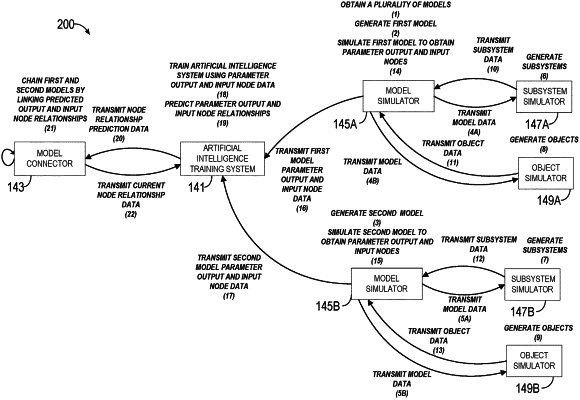| CPC G06N 3/045 (2023.01) [G06N 3/084 (2013.01); G06N 5/04 (2013.01)] | 18 Claims |

|
1. A computer-implemented method for model chaining, the method comprising:
obtaining a plurality of models, wherein the plurality of models comprises a first model and a second model, wherein the first model comprises at least one or more first objects, and wherein the second model comprises at least one or more second objects that are different than the at least one or more first objects;
simulating one or more first objects of the first model using first error detection data that indicates one or more errors that occurred in historical operation of the first model and one or more second objects of the second model using second error detection data that indicates one or more errors that occurred in historical operation of the second model to obtain a parameter output node of the first model and a parameter input node of the second model;
training an artificial intelligence model using the parameter output node of the first model and the parameter input node of the second model, wherein the trained artificial intelligence model, when executed, generates a prediction that the parameter output node of the first model is related to the parameter input node of the second model; and
based at least in part on the generated prediction of the trained artificial intelligence model and an ontological layer, chaining the first and second models by linking the parameter output node of the first model with the parameter input node of the second model, wherein the ontological layer comprises a mapping of a nodal relationship between parameter output and input nodes,
wherein the method is performed using one or more processors.
|